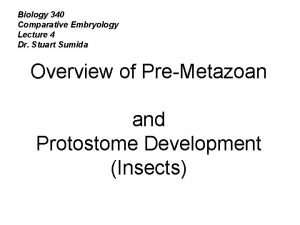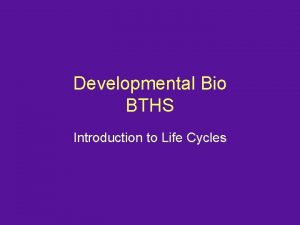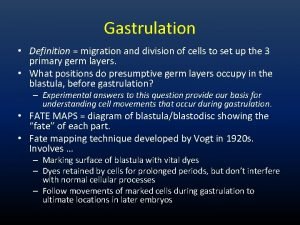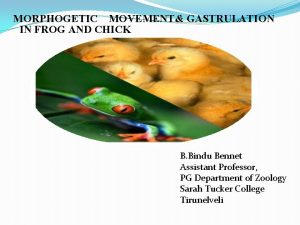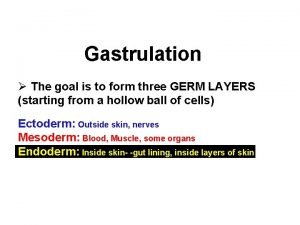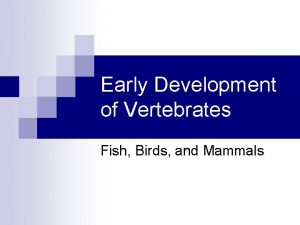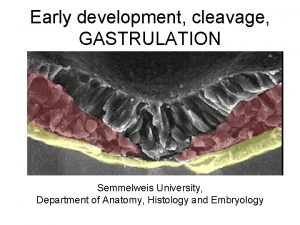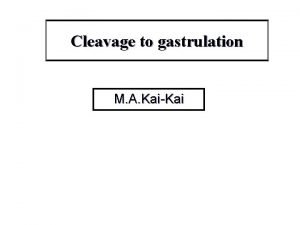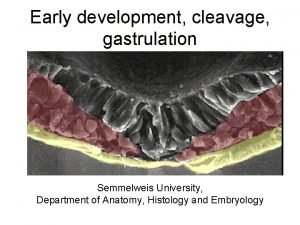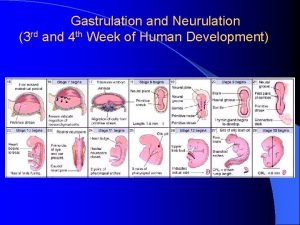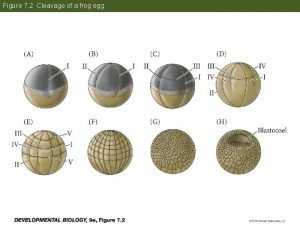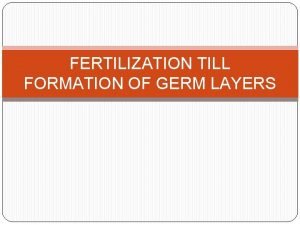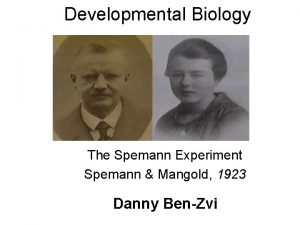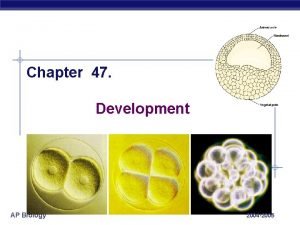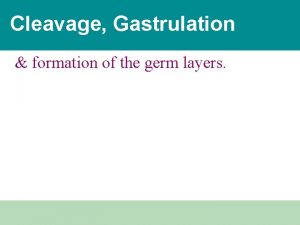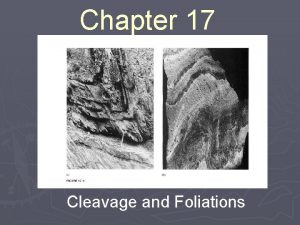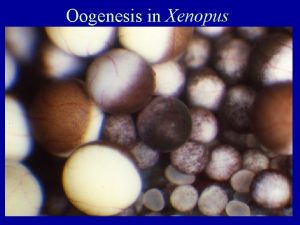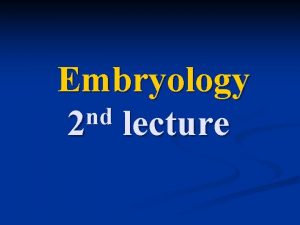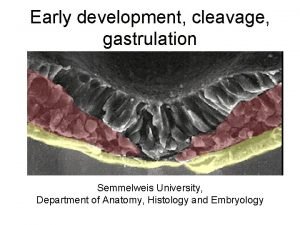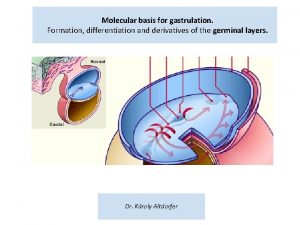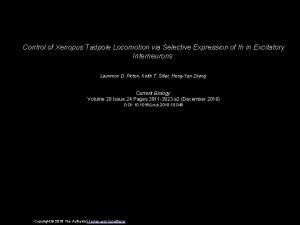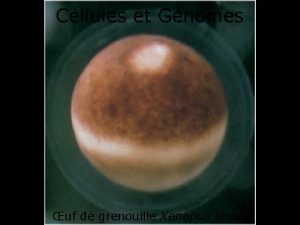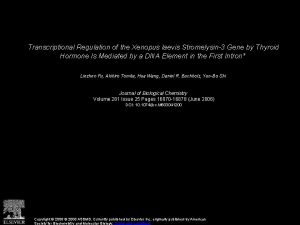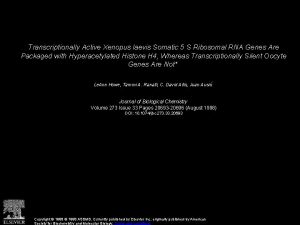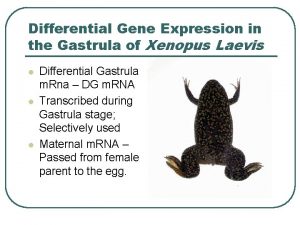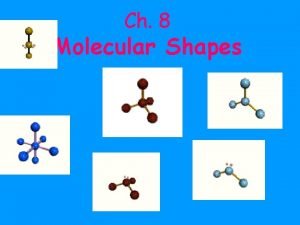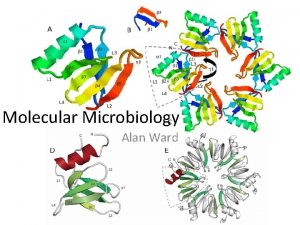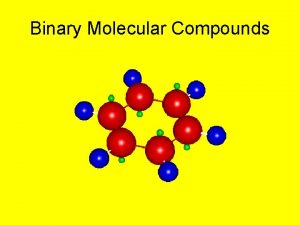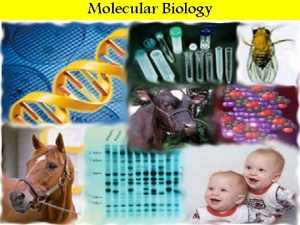Xenopus Cleavage and Gastrulation II A Molecular Focus





























- Slides: 29

Xenopus Cleavage and Gastrulation II: A Molecular Focus Gilbert - Chapter 10

Today’s Goals • Become familiar with the concepts of Cleavage, Gastrulation and Axis Determination • Become familiar with the types of cell movements in the embryo • Describe the processes of Cleavage and Gastrulation in Sea Urchin and Xenopus embryos • Become familiar with the types of genes that help guide gastrulation

As we move on, it will be important to remember • Differentiation: the development of specialized cell types • Commitment – Before the cell actually overtly differentiates, a period of cellular commitment occurs – Specification • Reversible • Autonomous and Conditional – Determination • Not reversible • Mosaic vs. Regulative Development

Amphibian Gastrulation • We’ll more closely examine some of the “regulative” aspects of Xenopus (and newt) gastrulation • Specifically – How cells interact with one another during cell migration – How cells signal to each other to determine cell fates

• One more important concept before we begin. . .

Cell Signaling • One group of cells changes the behavior of an adjacent group of cells – (shape, mitotic rate, fate, gene expression) • This is called induction – The cells that will produce signal = inducer – Cells that receive signal = responder

Cell Signaling • For this to happen: – Inducer must produce signal molecule – Responder must be competent to receive that signal! (and process it) – Example: • Signaling molecule is a secreted growth factor • Responder must have receptors on the cell membrane specific to that growth factor to receive that signal

• What if we waited until the next cleavage to transplant the cells? • Would back cells still be competent to receive the signal that they are now belly tissue? • Would the belly cells still be secreting that signal?

• So - now back to Amphibian gastrulation • Let’s apply these concepts. . .





Amphibian Axis Formation and “The Organizer” • Amphibian gastrulation and axis formation are an example of regulative development • Inductive interactions occur between cells • This was demonstrated by Hans Spemann and Hilde Mangold (University of Frieburg, early 1900’s) – Nobel Prize winners


The Grey Crescent • If one blastomere does not contain a portion of the grey crescent, it will not form a normal embryo – Conclusion: grey crescent is essential for proper embryonic development • What is so special about the grey crescent? – Fate maps show that these cells form the Dorsal lip of the blastopore! – Dorsal lip cells initiate gastrulation! – These cells must be committed when the grey crescent forms - but how? ? – What is in the grey crescent that commits them?

Spemann and Mangold • Performed many types of transplants at the early gastrula and late gastrula stages in the newt embryo • High amount of technical difficulty! • Results were fascinating and sent many developmental biologists on a hunt for signaling molecules


• These experiments showed that in most cases, the cells of the embryo are not committed until at least the late gastrula stage • But - There is ONE tissue from the early gastrula that is already committed. . .



The Organizer • Spemann dubbed the Dorsal lip of the blastopore as “the organizer” – Induced ventral cells to form neural tube and somites – Organized the axis of the embryo

The organizer: more questions than answers! • How did the organizer get its abilities? • Why is the dorsal blastopore lip different than rest of embryo? • What factors are secreted to cause the induction of the axes?

Hunting for Signaling Molecules • Needed to be able to screen c. DNA libraries, clone the m. RNA’s that could mimic these inductions • Choosing candidate molecules also became easier with help from Drosophila studies – Weischaus, Nusslein-Volhard, Lewis – Massive mutagenesis screen to find all genes essential for fly embryogenesis – Frog embryologists could try out some of those candidate molecules as well


Inducing the Organizer • -catenin – Protein that accumulates in the dorsal portion of the egg after fertilization – 2 known functions: Cell adhesion, nuclear transcription factor in the WNT signaling pathway – A possible candidate

Adherens junction: ß- catenin


ß-catenin and organizer induction: The evidence • ß-catenin continues to accumulate in the dorsal most vegetal cells – SO: it’s in the right place at the right time! (expressed) – BUT: can it do the job? ? (Overexpression? ) – AND: Is it essential for getting the job done? (KO? ) • Injection of ß-catenin on the ventral side of the embryo induces a secondary axis – SO: it can do the job! • Depletion of ß-catenin using anti-sense oligonucleotides results in the lack of dorsal structures – SO: it is essential for getting the job done!
 Dorsal lip of the blastopore
Dorsal lip of the blastopore Radial cleavage
Radial cleavage Blastocoal
Blastocoal Xenopus life cycle
Xenopus life cycle Xenopus borealis
Xenopus borealis Porter's generic strategies
Porter's generic strategies Business level strategy cost leadership
Business level strategy cost leadership For adult
For adult Actor focus vs object focus
Actor focus vs object focus Gastrulation and neurulation
Gastrulation and neurulation Gastrulation
Gastrulation What is a covalent bond simple definition
What is a covalent bond simple definition Giant molecular structure vs simple molecular structure
Giant molecular structure vs simple molecular structure Giant molecular structure vs simple molecular structure
Giant molecular structure vs simple molecular structure Entophylle
Entophylle Blastocoal
Blastocoal Will produce
Will produce Gastrulation
Gastrulation Bird cleavage
Bird cleavage Primitive line
Primitive line Meridional cleavage
Meridional cleavage Prechordal plate
Prechordal plate Gastrula diagram
Gastrula diagram Gastrulation week
Gastrulation week Frog cleavage
Frog cleavage Prechordal
Prechordal Spemann-mangold
Spemann-mangold Whats gastrulation
Whats gastrulation Spiral and determinate cleavage
Spiral and determinate cleavage Cleavage model ap human geography
Cleavage model ap human geography

